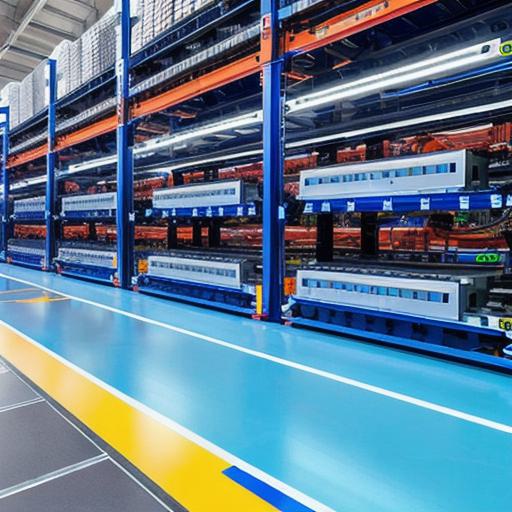AR Robotics: Transforming the Future of Automation and Manufacturing

As technology continues to evolve, one of the most exciting areas of development is Augmented Reality (AR) robotics. By combining the power of AR with advanced robotics systems, companies are able to create more efficient, cost-effective, and agile manufacturing processes that can adapt quickly to changing customer needs.
In this article, we will explore the basics of AR robotics, including what it is, how it works, and its potential applications in various industries. We will also examine some real-life examples of companies that are already leveraging the power of AR robotics to gain a competitive edge.

What is AR Robotics?
AR robotics is a combination of Augmented Reality technology and advanced robotics systems. AR allows users to see digital information overlaid onto the physical world, while robotics automates repetitive tasks, improves safety, and increases productivity. By combining these two technologies, AR robotics enables companies to create more efficient and agile manufacturing processes that can adapt quickly to changing customer needs.
One of the key benefits of AR robotics is its ability to enhance the performance of existing manufacturing systems. By overlaying digital information onto physical components, AR can provide real-time feedback on quality, alignment, and other critical factors that affect product quality and reliability. This allows workers to identify and correct problems quickly and efficiently, reducing waste and improving overall production rates.
Another advantage of AR robotics is its ability to improve safety in the workplace. By automating repetitive tasks that are prone to injury or fatigue, AR robotics can reduce the risk of accidents and injuries on the job site. This not only improves worker safety but also reduces costs associated with workers’ compensation and insurance.
How AR Robotics Works
AR robotics systems typically consist of three main components: sensors, actuators, and software. Sensors are used to capture data about the physical environment, such as the position, orientation, and movement of objects. Actuators are used to control the movements of robotic arms or other mechanical devices based on this data. Software is used to process the data and provide real-time feedback and instructions to the robot.
AR robotics systems can be used in a wide range of applications, from assembly line manufacturing to more specialized processes such as welding, painting, and inspection. One example of an AR robotics system is the "SprayBot" developed by Bossa Nova Robotics. The SprayBot uses AR technology to guide robotic arms through complex spraying tasks, ensuring precise application and reducing waste.
Real-Life Examples of AR Robotics in Action
One company that is already leveraging the power of AR robotics is General Motors (GM). GM has partnered with Boston Dynamics to develop an AR system that helps workers assemble car engines more efficiently and accurately. The system uses sensors and actuators to guide robotic arms through the assembly process, providing real-time feedback on quality and alignment.
Another example of AR robotics in action is the "AR Workbench" developed by SAP. The AR Workbench allows workers to visualize 3D models of products and components, making it easier to identify and correct issues before they become more serious problems. This has resulted in significant improvements in production rates and quality for companies using the system.
The Future of AR Robotics
As AR technology continues to evolve, we can expect to see even more exciting developments in the field of AR robotics. One area that is likely to see significant growth is the use of AR in maintenance and repair processes. By overlaying digital information onto physical components, AR can provide real-time feedback on potential issues








